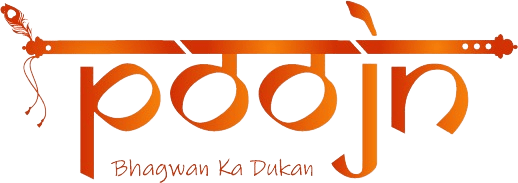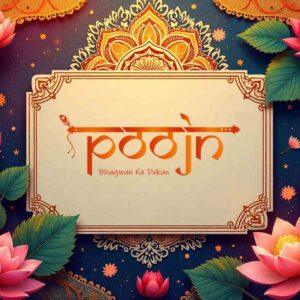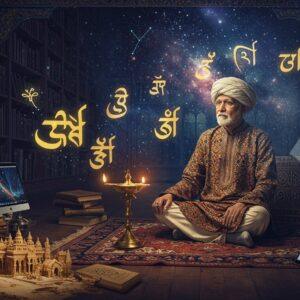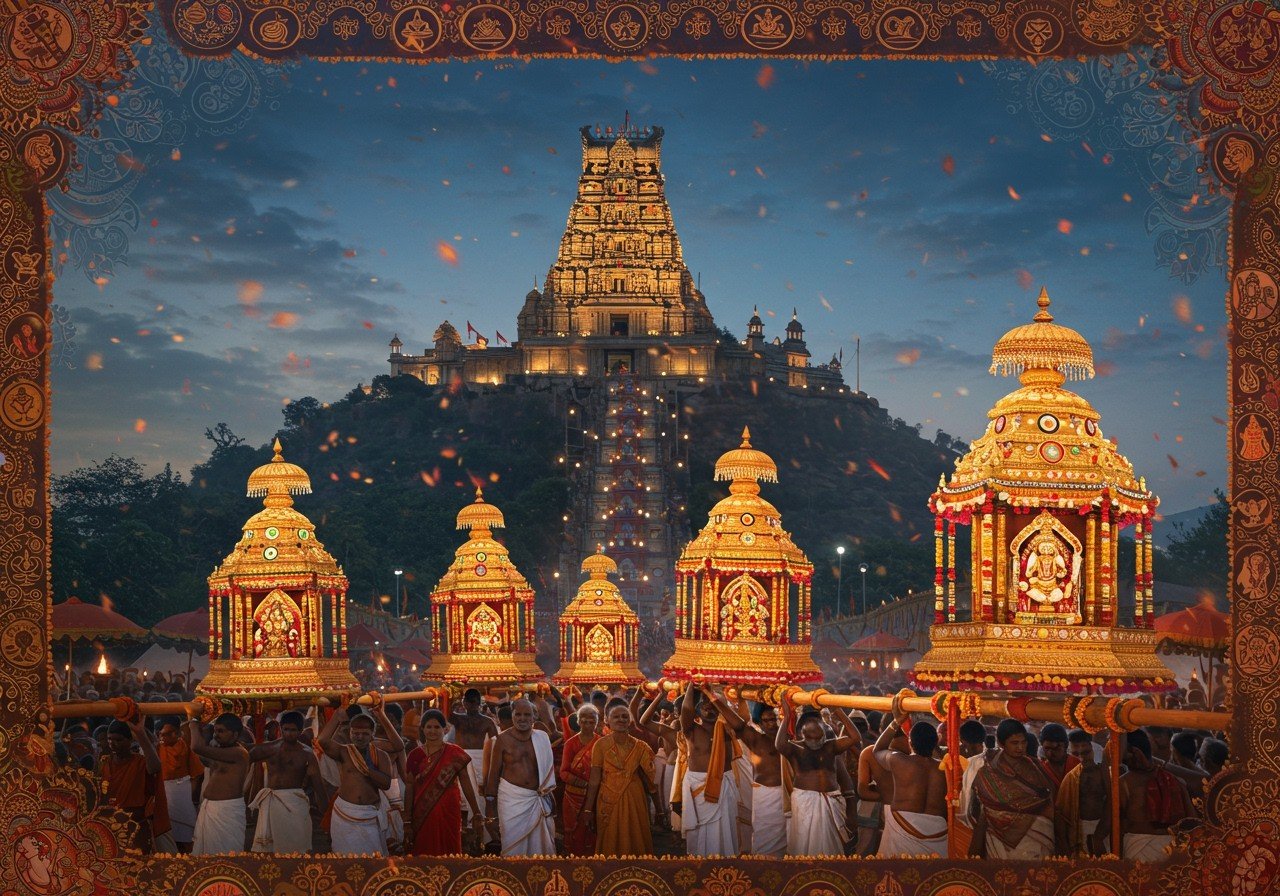
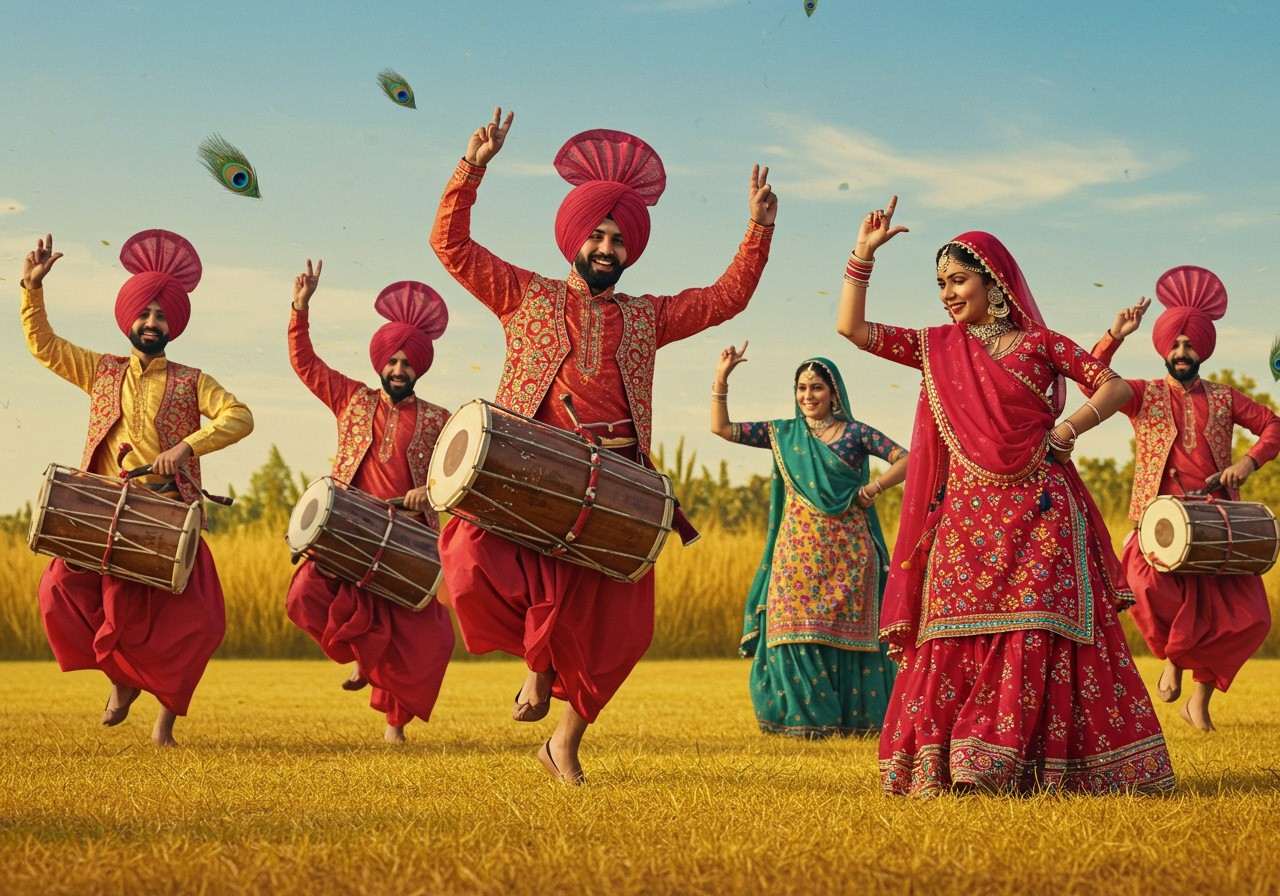
Close your eyes for a moment and listen. Can you hear the powerful, infectious beat of the dhol? Can you see the flash of vibrant colours from a phulkari dupatta? This is the undiluted spirit of Punjab, a land of immense joy, courage, and celebration. The very soul of this incredible region is best expressed through its folk dances, which are more than just performances; they are stories, emotions, and traditions brought to life through rhythm and movement.
These traditional dance forms are the heartbeat of every celebration, from the happiness of a wedding to the gratitude of a harvest festival. Let’s take a beautiful journey into the world of Punjabi folk dances and feel their energy together.
Bhangra: The Global Heartbeat of Punjab
Bhangra is not just a dance; it’s an explosion of pure joy that has crossed borders to be loved by the entire world. Originally a folk dance performed by farmers to celebrate the harvest festival of Baisakhi, Bhangra is defined by its high-energy, athletic movements. The powerful beat of the dhol is its backbone, compelling everyone, young and old, to tap their feet. Today, while it lights up international stages and music videos, its heart remains firmly in the fields of Punjab, symbolising prosperity and happiness.
Giddha: The Graceful Narrative of Punjabi Women
If Bhangra is the thunderous beat, Giddha is the graceful rhythm that complements it. Performed exclusively by women, Giddha is a vibrant and enchanting spectacle of feminine grace. It is often considered the female counterpart to Bhangra. More than just a dance, it is a form of storytelling where women enact verses called ‘bolis’ – folk couplets that humorously or poignantly narrate stories from their daily lives, from family banter to social commentary. With rhythmic clapping and elegant movements, Giddha is an essential part of weddings and festive occasions, creating an atmosphere of pure sisterhood and joy.
Jhumar: The Dance of Gentle Celebration
Imagine a dance that flows like a gentle river, full of grace and elegance. That is Jhumar for you. Originating from the Sandalbar region of Punjab, this dance is performed by both men and women, often in a circle. Its movements are slower, more rhythmic, and incredibly graceful compared to the explosive energy of Bhangra. Accompanied by instruments like the Algoza and Chimta, Jhumar creates a mesmerising, almost trance-like atmosphere, symbolising the joy and contentment of life.
Exploring More Rhythms of Punjab
The cultural tapestry of Punjab is woven with many more threads of dance, each unique and beautiful.
- Luddi: This is a dance of pure victory and celebration, primarily performed by men. Characterised by vigorous, athletic moves like high jumps and spins, Luddi is performed to celebrate a triumph, making it a fixture at weddings and other joyous events. It’s a sight to behold, radiating an infectious spirit of happiness.
- Sammi: A dance that tells tales of resilience and emotion, Sammi is performed by women. It’s known for its intricate footwork and storytelling hand movements. The dance often narrates folk tales and expresses a deep connection with nature and love, showcasing a softer, more introspective side of Punjabi folk tradition.
- Malwai Giddha: Hailing from the Malwa region, this is a unique and dynamic form of Giddha. It fascinatingly blends the grace of traditional Giddha with elements of martial arts. Performers often use props like swords, sticks, and shields, turning the dance into a dramatic and powerful performance that speaks of both beauty and strength.
Bring the Spirit of Celebration into Your Home
The essence of these folk dances is celebration—marking life’s special moments with tradition and joy. Whether it’s a wedding, a festival, or a family gathering, you can bring that same traditional vibrancy into your own home. At Poojn.in, we understand the importance of authentic cultural items that make your celebrations truly meaningful.
For instance, at a wedding where the joyous Giddha is performed, a bride’s trousseau is incomplete without traditional elements. A beautiful pure brass sindoor box is not just an item but a symbol of marital bliss and tradition, perfect for such a sacred occasion. Explore our collection to find items that resonate with your cultural roots.
Curious to Know More? Let’s Dive Deeper
Many people wonder what makes Giddha so different from other Punjabi dances. While Bhangra is celebrated for its raw power and high-octane energy, Giddha shines with its lyrical grace, expressive storytelling through ‘bolis’, and the powerful sense of community it fosters among women.
The role of traditional attire in these performances is also deeply significant. It’s not just a costume; it’s a vital part of the story. The colourful turbans and kurtas in Bhangra, or the vibrant salwar kameez and dupattas in Giddha, add to the visual spectacle and cultural authenticity of the dance. These outfits are a proud display of Punjab’s rich textile heritage.
And are these dances still a part of modern life in Punjab? Absolutely! They are the soul of every major celebration, from grand weddings to local festivals. These folk dances are a living, breathing tradition, enthusiastically passed down from one generation to the next, ensuring the cultural heartbeat of Punjab continues to beat strongly.
The Living, Breathing Legacy of Punjab
Punjab’s folk dances are not relics of the past; they are a vibrant, dynamic legacy of joy, unity, and cultural pride. They serve as a beautiful reminder of the simple joys of life and the importance of community. By celebrating and participating in these dances, we honour our roots and ensure that these incredible traditions continue to inspire and bring happiness for generations to come. So, the next time you hear the beat of a dhol, don’t just stand by—let the rhythm of Punjab move your soul!
